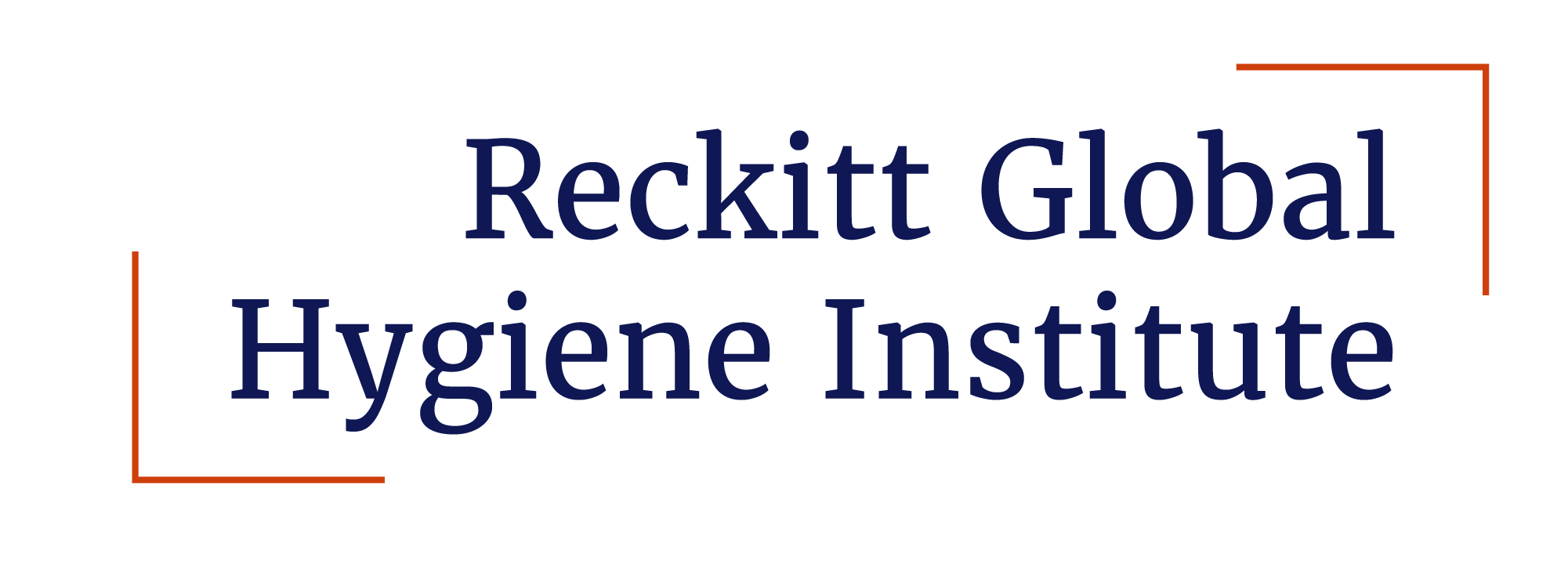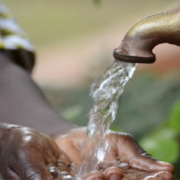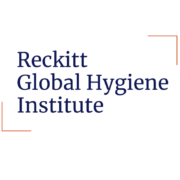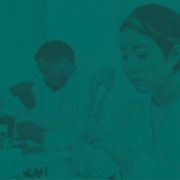Young Australians are taking up reusable menstrual hygiene products, but their needs aren’t being met

New research reveals what women, girls and people who menstruate really want when it comes to their periods and the failures of educators to provide it
Half of young women and people who menstruate in Victoria, Australia surveyed have tried a reusable menstrual product— such as menstrual cups, recyclable pads and period pants — but education, product support, and bathroom facilities are still too focused on single-use items, according to new research.
“Reusable period products: use and perceptions among young people in Victoria, Australia”, published in the BMC Women’s Health journal, is the first estimate of menstrual product preferences among young people in Australia. It found that sustainability in hygiene products is a high priority for 28% of young people; over one third of participants reported using a reusable product during their last period. Yet systemic reviews of puberty education websites found that only 30% mentioned menstrual cups and less than 25% referenced reusable pads.[i]
“There is increasing evidence to show that younger generation are more environmentally conscious and that filters down to the everyday products they use. Hygiene products are no different,” said David Wheeler, Operations and Strategy Director at the Reckitt Global Hygiene Institute (RGHI), which provides funding to one of the paper’s researchers via the RGHI Fellowship program. “The menstrual hygiene sector should be recognizing that and ensuring that there is adequate information and access to such products. Only then can the menstrual hygiene needs of all be met, in line with the 2030 sustainable development agenda.”
More than a third of the study’s participants reported that they did not have enough information about reusable products, with younger participants (aged 15–19) and high school students significantly less likely to report having sufficient information on reusables (47.7% and 55.7%, respectively). Government free product provision, especially in schools, tends to solely focus on single-use sanitary pads and tampons.
Such products, however, are known to have a significant environmental cost, generating 28,114 tonnes of waste every year in the UK alone. Reusable menstrual products are thought to be more environmentally sustainable, with the environmental impact of a menstrual cup estimated to be 1.5% of that of a disposable product and only 10% of the cost. In high-income countries, it is estimated that using a reusable pad saves $205 and the use of 1,300 single-use tampons per person.
Dr Julie Hennegan, Senior Research Fellow at the Burnet Institute and co-author of the research said: “Our findings indicate that young people are taking up reusable menstrual product options, that they prioritize environmental sustainability and want more information and supportive facilities to support product choices.”
The study concludes that policymakers must consider young people’s product preferences. The authors recommend improving hygiene education to include reusable products and considering how facilities such as the design of bathrooms may support the uptake of reusables. Comfort, privacy, safety, access to water and soap for washing, and mirrors for checking for leakage have all been identified as key requirements for facilities to promote menstrual health and hygiene.[ii],[iii],[iv],[v],[vi]
“We want to see young people empowered to select products that work for them, including sustainable alternatives to disposable products.” said Dr Hennegan.
“Having more access to information about the different sanitary products available gives women and girls more choice and allows them to make a better informed decision for their body, lifestyle and environment,” said Wheeler.
“It’s research like this that identifies what those who menstruate need that is vital to the hygiene space,” said Julie Hennegan. “For too long, decision-makers have been operating blind, making unilateral decisions, or perhaps no decisions at all, that leave gaps in menstrual health and hygiene services.”
According to the World Bank, around 500 million people lack access to menstrual products and adequate facilities for menstrual hygiene management.
“By generating more localized research like that of Hennegan and co-authors at the Burnet Institute, decision-makers can better understand what is lacking when it comes to hygiene and the steps that need to be taken to remedy those,” said Wheeler.
This is the ethos behind RGHI which was created amid the pandemic with funding from Reckitt plc. RGHI has since issued a number of grants to educational and charitable institutions for original scientific research whilst providing three-year fellowships (which includes a salary, research costs, travel expenses and a training budget) via the RGHI Fellowship Program. It also recently opened applications for its Senior Fellowship Programme and International Collaboration Award .
Wheeler concludes, “Menstrual hygiene research has been neglected and underfunded for many years now, so it is fantastic to see this high-quality research being published. We are starting to see how questions about menstrual health and hygiene intersect with questions of sustainability and cost, and we need more research like this to continue to plug the gaps in our knowledge.”
[i] Van Eijk AM, Zulaika G, Lenchner M, Mason L, Sivakami M, Nyothach E, et al. Menstrual cup use, leakage, acceptability, safety, and availability: a systematic review and meta-analysis. The Lancet Public Health. 2019;4(8):e376–93.
[ii] Hennegan J, Winkler IT, Bobel C, Keiser D, Hampton J, Larsson G, et al. Menstrual health: a definition for policy, practice, and research. Sex Reprod Health Matters. 2021;29(1):1–8.
[iii] Schmitt M, Clatworthy D, Ogello T, Sommer M. Making the case for a female-friendly toilet. Water. 2018;10(9):1193.
[iv] UNICEF. Guidance on Menstrual Health and Hygiene. New York: UNICEF. Available from https://www.unicef.org/wash/files/UNICEF-Guidance-menstrual-health-hygiene-2019.pdf. Accessed July 2019; 2019.
[v] Hennegan J, Shannon AK, Rubli J, Schwab KJ, Melendez-Torres GJ. Women’s and girls’ experiences of menstruation in low- and middle-income countries: a systematic review and qualitative metasynthesis. PLoS Med. 2019;16(5): e1002803.
[vi] Schmitt ML, Hagstrom C, Nowara A, Gruer C, Adenu-Mensah NE, Keeley K, et al. The intersection of menstruation, school and family: experiences of girls growing up in urban cities in the USA. Int J Adolesc Youth. 2021;26(1):94–109.
Young Australians are taking up reusable menstrual hygiene products,
but their needs aren’t being met
New research reveals what women, girls and people who menstruate really want when it comes to their periods and the failures of educators to provide it.
[Parsippany, New Jersey] April 2023 – Half of young women and people who menstruate in Victoria, Australia surveyed have tried a reusable menstrual product— such as menstrual cups, recyclable pads and period pants — but education, product support, and bathroom facilities are still too focused on single-use items, according to new research.
“Reusable period products: use and perceptions among young people in Victoria, Australia”, published in the BMC Women’s Health journal, is the first estimate of menstrual product preferences among young people in Australia. It found that sustainability in hygiene products is a high priority for 28% of young people; over one third of participants reported using a reusable product during their last period. Yet systemic reviews of puberty education websites found that only 30% mentioned menstrual cups and less than 25% referenced reusable pads.[i]
“There is increasing evidence to show that younger generation are more environmentally conscious and that filters down to the everyday products they use. Hygiene products are no different,” said David Wheeler, Operations and Strategy Director at the Reckitt Global Hygiene Institute (RGHI), which provides funding to one of the paper’s researchers via the RGHI Fellowship program. “The menstrual hygiene sector should be recognizing that and ensuring that there is adequate information and access to such products. Only then can the menstrual hygiene needs of all be met, in line with the 2030 sustainable development agenda.”
More than a third of the study’s participants reported that they did not have enough information about reusable products, with younger participants (aged 15–19) and high school students significantly less likely to report having sufficient information on reusables (47.7% and 55.7%, respectively). Government free product provision, especially in schools, tends to solely focus on single-use sanitary pads and tampons.
Such products, however, are known to have a significant environmental cost, generating 28,114 tonnes of waste every year in the UK alone. Reusable menstrual products are thought to be more environmentally sustainable, with the environmental impact of a menstrual cup estimated to be 1.5% of that of a disposable product and only 10% of the cost. In high-income countries, it is estimated that using a reusable pad saves $205 and the use of 1,300 single-use tampons per person.
Dr Julie Hennegan, Senior Research Fellow at the Burnet Institute and co-author of the research said: “Our findings indicate that young people are taking up reusable menstrual product options, that they prioritize environmental sustainability and want more information and supportive facilities to support product choices.”
The study concludes that policymakers must consider young people’s product preferences. The authors recommend improving hygiene education to include reusable products and considering how facilities such as the design of bathrooms may support the uptake of reusables. Comfort, privacy, safety, access to water and soap for washing, and mirrors for checking for leakage have all been identified as key requirements for facilities to promote menstrual health and hygiene.[ii],[iii],[iv],[v],[vi]
“We want to see young people empowered to select products that work for them, including sustainable alternatives to disposable products.” said Dr Hennegan.
“Having more access to information about the different sanitary products available gives women and girls more choice and allows them to make a better informed decision for their body, lifestyle and environment,” said Wheeler.
“It’s research like this that identifies what those who menstruate need that is vital to the hygiene space,” said Julie Hennegan. “For too long, decision-makers have been operating blind, making unilateral decisions, or perhaps no decisions at all, that leave gaps in menstrual health and hygiene services.”
According to the World Bank, around 500 million people lack access to menstrual products and adequate facilities for menstrual hygiene management.
“By generating more localized research like that of Hennegan and co-authors at the Burnet Institute, decision-makers can better understand what is lacking when it comes to hygiene and the steps that need to be taken to remedy those,” said Wheeler.
This is the ethos behind RGHI which was created amid the pandemic with funding from Reckitt plc. RGHI has since issued a number of grants to educational and charitable institutions for original scientific research whilst providing three-year fellowships (which includes a salary, research costs, travel expenses and a training budget) via the RGHI Fellowship Program. It also recently opened applications for its Senior Fellowship Programme and International Collaboration Award .
Wheeler concludes, “Menstrual hygiene research has been neglected and underfunded for many years now, so it is fantastic to see this high-quality research being published. We are starting to see how questions about menstrual health and hygiene intersect with questions of sustainability and cost, and we need more research like this to continue to plug the gaps in our knowledge.”
[i] Van Eijk AM, Zulaika G, Lenchner M, Mason L, Sivakami M, Nyothach E, et al. Menstrual cup use, leakage, acceptability, safety, and availability: a systematic review and meta-analysis. The Lancet Public Health. 2019;4(8):e376–93.
[ii] Hennegan J, Winkler IT, Bobel C, Keiser D, Hampton J, Larsson G, et al. Menstrual health: a definition for policy, practice, and research. Sex Reprod Health Matters. 2021;29(1):1–8.
[iii] Schmitt M, Clatworthy D, Ogello T, Sommer M. Making the case for a female-friendly toilet. Water. 2018;10(9):1193.
[iv] UNICEF. Guidance on Menstrual Health and Hygiene. New York: UNICEF. Available from https://www.unicef.org/wash/files/UNICEF-Guidance-menstrual-health-hygiene-2019.pdf. Accessed July 2019; 2019.
[v] Hennegan J, Shannon AK, Rubli J, Schwab KJ, Melendez-Torres GJ. Women’s and girls’ experiences of menstruation in low- and middle-income countries: a systematic review and qualitative metasynthesis. PLoS Med. 2019;16(5): e1002803.
[vi] Schmitt ML, Hagstrom C, Nowara A, Gruer C, Adenu-Mensah NE, Keeley K, et al. The intersection of menstruation, school and family: experiences of girls growing up in urban cities in the USA. Int J Adolesc Youth. 2021;26(1):94–109.









